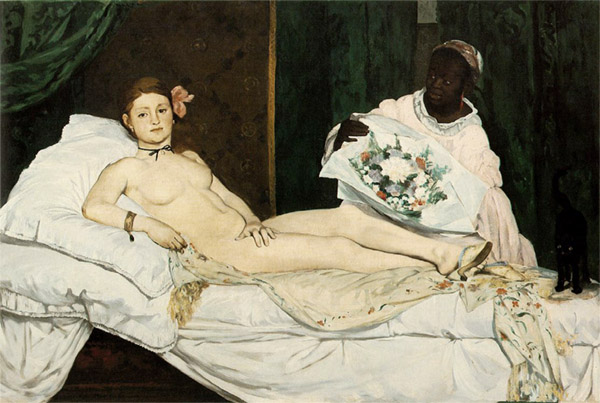Composition:
Composition is basically evaluating how the entire piece is put together (where your eye goes) and how that impacts the final result that the artist intended.
 In Da Vinci's The Last Supper, he uses triangular relationships to guide the eye and emphasize Christ. Note the triangle of Christ's head and hands, as well as how the walls and ceiling all point towards the center.
In Da Vinci's The Last Supper, he uses triangular relationships to guide the eye and emphasize Christ. Note the triangle of Christ's head and hands, as well as how the walls and ceiling all point towards the center.Volume (mass,weight):
Volume relates to the depth of items in the piece and the emphatic purpose behind the technique.

In Michelangelo's Pieta, the sheer weight and mass of Christ on Mary's lap is truly believable. Note her hand under his shoulder and how it appears that she really is holding him up as his head is rolled back and arm hung loosely.
Light (contrast):
Lighting, in any type of media, is absolutely key in relaying appropriate responses to the piece (somber, anxious, warm, etc)
 In Caravaggio's Doubting Thomas, notice how the source of light is very dim, creating a somewhat tense and somber mood, highly appropriate for the situation depicted, but that most of the light that is present falls on Christ, emphasizing him and his importance.
In Caravaggio's Doubting Thomas, notice how the source of light is very dim, creating a somewhat tense and somber mood, highly appropriate for the situation depicted, but that most of the light that is present falls on Christ, emphasizing him and his importance.Color:
Color schemes and choices are often taken for granted, but in fact they are very calculated and play a big part in setting mood of the piece.

In Monet's Water Lily Pond, the color scheme of yellows, greens, teals and grays conveys a very tranquil atmosphere.
Space:
Spacial standards have been different according to the time period (ie. Rennaissance) but space contributes to the realism of the piece and also helps the artist with emphasis.
 In Titian's Venus of Urbino, space and perspective are a bit confusing. Observe how it is hard to tell how far away the window is from the woman in the background, and how far she is from the dog curled up, and how far that dog is from Venus.
In Titian's Venus of Urbino, space and perspective are a bit confusing. Observe how it is hard to tell how far away the window is from the woman in the background, and how far she is from the dog curled up, and how far that dog is from Venus.Line:
Another aspect of art that is often overlooked, the slightest difference in the angles or formations of the lines in a piece can drastically alter the energy the artist was trying to convey.
 In Bernini's David, notice the drama and tension created by his diagonal body and legs, with his arm crossing over his torso. The angle of his limbs gives off a burst of energy, like we are seeing him coiled up, ready to spring.
In Bernini's David, notice the drama and tension created by his diagonal body and legs, with his arm crossing over his torso. The angle of his limbs gives off a burst of energy, like we are seeing him coiled up, ready to spring.Shape:
Shape, along with line and color, also helps with energy and emotion.
 In Francesca's Flagellazione, the shapes used are very neat and precise, such as the ceiling and pillars very straight and square appearances. Even the poses of the figures are mostly stiff looking. However, there are certainly an abudance of shapes present in this piece, it's just too bad that they don't elicit more of a reaction.
In Francesca's Flagellazione, the shapes used are very neat and precise, such as the ceiling and pillars very straight and square appearances. Even the poses of the figures are mostly stiff looking. However, there are certainly an abudance of shapes present in this piece, it's just too bad that they don't elicit more of a reaction.Positive/Negative Space:
Positive and negative space are key when the artist is trying to emphasize a certain area of the piece or elicit a certain response from the viewer.
 In Manet's Olympia, her body, the bed she is posing on and the figure of her servant all have detailed shape; however, the walls in the background all blend together and don't feel tangible like everything else does, fading into negative space to further emphasize the subject.
In Manet's Olympia, her body, the bed she is posing on and the figure of her servant all have detailed shape; however, the walls in the background all blend together and don't feel tangible like everything else does, fading into negative space to further emphasize the subject.
No comments:
Post a Comment